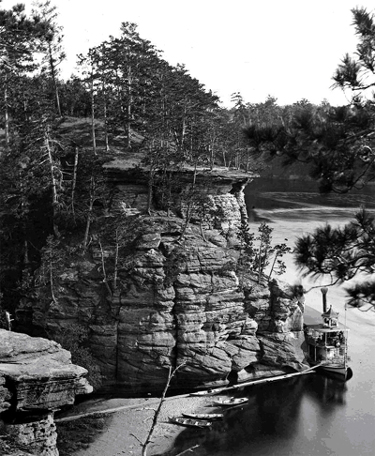As the year draws to a close, bloviators throughout the media universe strive to list the most significant events of the previous twelve months. We are not immune to this pastime, but with a slight alteration. The past year we’d like to examine is a century old.
1909 was a year like any other year except when it was not.
In politics, the state legislature elected Isaac Stephenson to the United States Senate despite critics who claimed the lumber baron from Marinette used his wealth to buy the seat.
Progressive state senators passed a resolution recognizing the right of women to vote in all state elections, but conservative assemblymen did not. So, as they had for years, Wisconsin women voted in local school board elections, based on the premise that education was for children and women tended children and therefore…..
Also in 1909, the first airplane to fly in our state took off and landed intact at Beloit.
Significant surely, but I think the most important event of 1909 occurred at the Dells of the Wisconsin River. After five years of construction the largest hydroelectric power station yet built in our state was completed–dam, diverson and dynamos.
The Dells station was the latest turn in a decade long transformation of the power in Wisconsin rivers from the sawing, grinding and milling of lumber and grain to electrical generation. It was cutting edge technology, with an impact as profound as any of the high-tech innovations we’ve experienced in the last thirty years–and basic to them. You can’t have electronics until you have electricity.
Although one of many new hydropower stations in Wisconsin, the Dells was different. No local market existed for the ten megawatts of power it could generate. Like the field of dreams, if it was built, they would come. They being factories in need of power.
The Dells station was also different in that it was the first major alteration of a Wisconsin river to face opposition on environmental grounds. The not-yet-renowned photographer, Henry Hamilton Bennett, attempted to stop construction of the power station dam because it would raise and hold water levels upstream by as much as nineteen feet. Many of the geological wonders he had captured on film would be drowned forever and the towering rock formations he knew and loved would not be as tall because the water below would lap higher up their flanks.
Hamilton rallied some support from conservationists around the state, but hardly enough to halt construction of the dam. His neighbors in the village of Kilbourn considered him to be a cranky old man trying to stall the wheels of progress. It was the 20th Century, after all, the age of electricity had dawned and the Dells dam would bring power and prosperity.
It didn’t. No industrialist relocated to Kilbourn no matter how bright its new electric lights did shine. The power generated there had to be sold at a loss and transmitted miles into the grid of the greater Milwaukee electric railroad company.
The village of Kilbourn did not begin to develop into the vacation mecca we know as Wisconsin Dells until the first wave of automobile tourism began in the 1920s. After World War II, Wisconsin Dells became the number one tourist destination in our state.
By then, the power station was part of the riverscape, its electricity running the amusement park rides and charging the neon in the signs. Visitors riding the boats past the tall rocks did not know that they once stood taller and what natural wonders lay beneath the deep water below.
–Michael Goc





 Posted by michaelgoc
Posted by michaelgoc 




